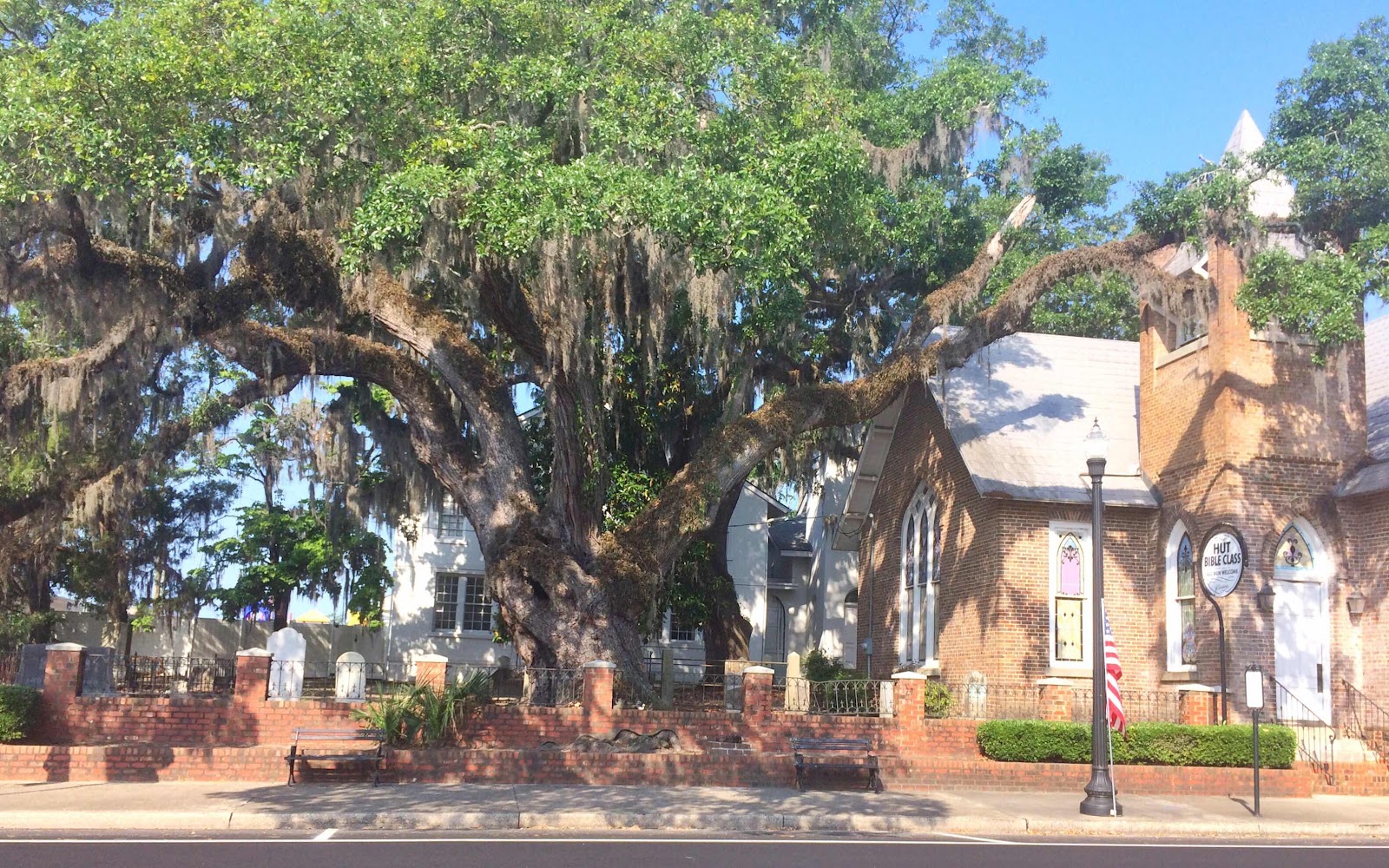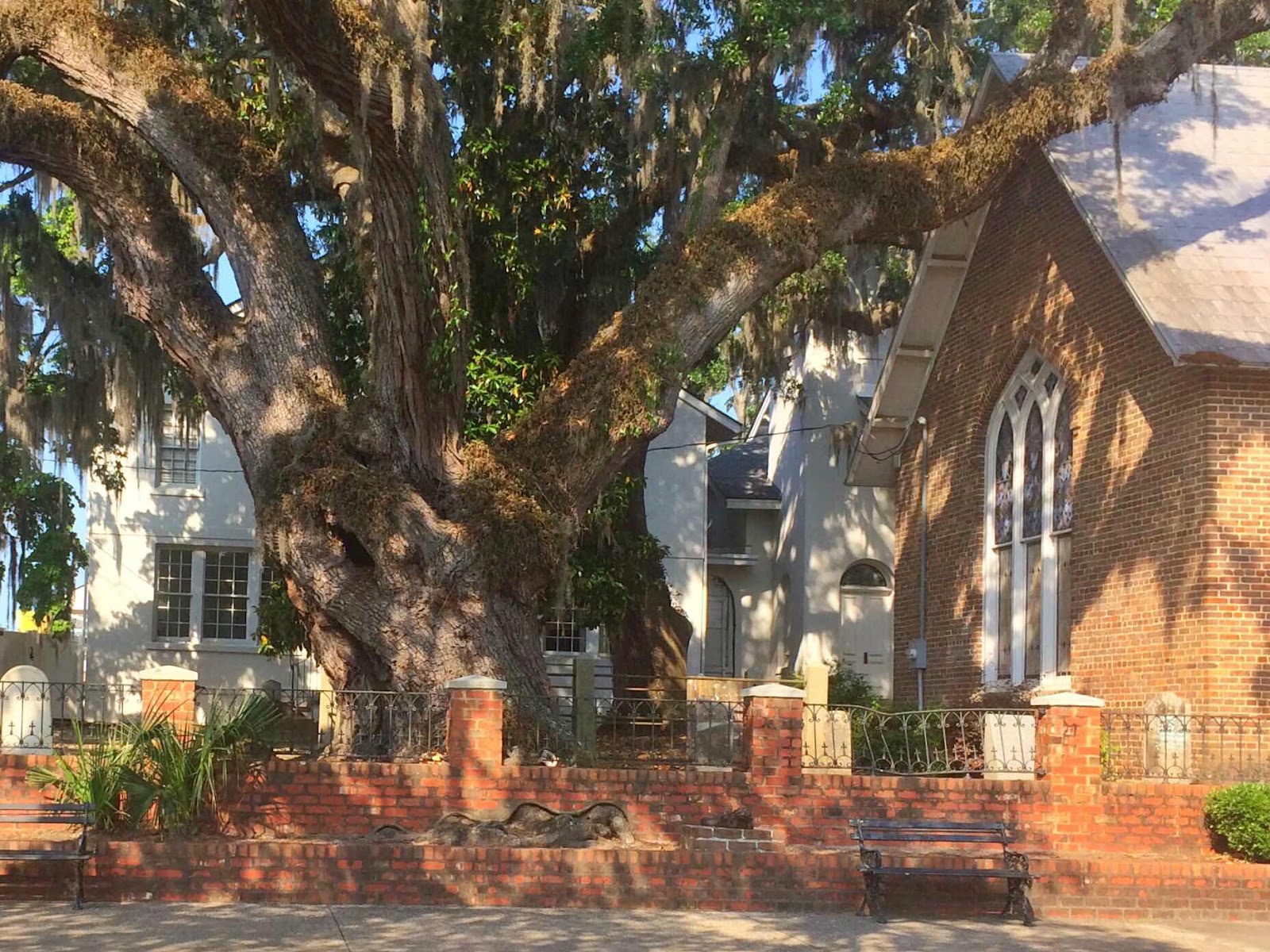The Alligator Oak, circumference 18 feet, 7 1/2 inches, stands in the graveyard of the First United Methodist Church in downtown Conway where it has stood since 1537! It’s a Live Oak, a tree used extensively in America’s history by shipbuilders. The “knees” (where branches join the trunk) made incredibly strong joints that were used to brace ships’ sides for many years, until wood was replaced by steel.

There are other live oaks in South Carolina that rival it in age, but if you look closely you can see the eye of an alligator in the bark on the left side, with a snout running down the tree and beneath the brick retaining wall.

There are other live oaks in South Carolina that rival it in age, but if you look closely you can see the eye of an alligator in the bark on the left side, with a snout running down the tree and beneath the brick retaining wall.
🐊 🐊 🐊
(I want to assure everyone that we do know how to change a tire and we do have a spare tire! There are times it is not wise to do it yourself, and this was one of them. The Writer had had recent surgery, it was 101 degrees in the shade, and I cannot lift tires like this up onto a jacked up wheel or back into the car over the tailgate. We carry roadside assistance insurance and were grateful to the nice guy who came eventually and apologized for the long delay.)